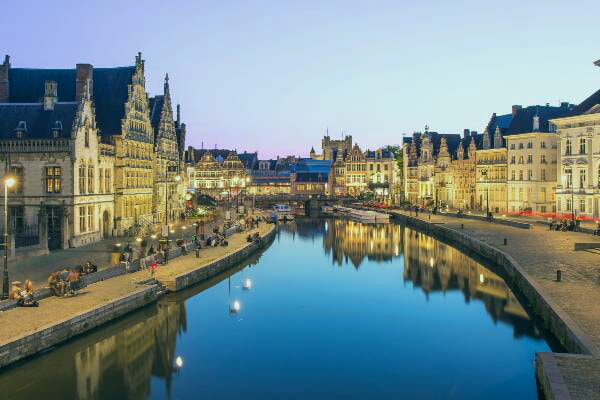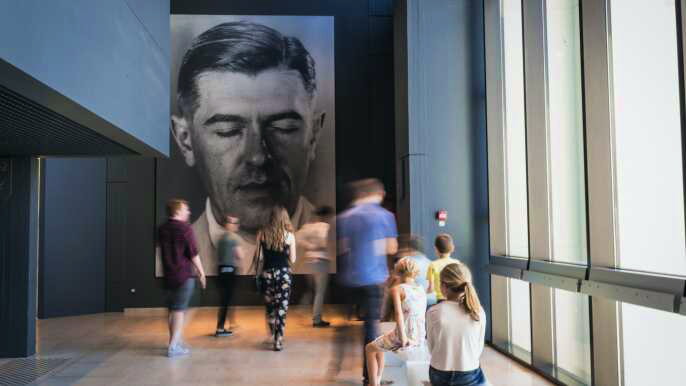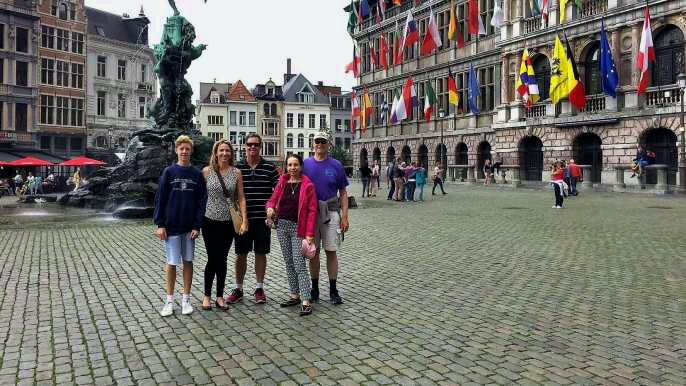Whether you're looking for an active holiday or a cultural one, there are plenty of things to do and see in Ghent. The city is located at the confluence of the Leie and Scheldt rivers, and is known for its medieval architecture.
St. Nicholas' Church
Located in Ghent, Belgium, Saint Nicholas' Church has been a symbol of the medieval city for over 700 years. It is one of three great spires in the central part of the city. It was built in the 13th century as an alternative to an early Romanesque structure. It was restored in the 19th century.
The crypt is the oldest part of the cathedral. It is located in the former Romanesque church and features wall paintings.
The building has a unique Gothic architectural style. The tower above the transepts and the nave were built in the Scheldt Gothic style. The exterior is made from blue-gray Tournai stone.
Museum of Stone Cutting and Sculpture
During your tour of Ghent, you can find the Museum of Stone Cutting and Sculpture. This museum is situated in the Cistercian Abbey of Bijloke, a beautiful and historic building. This museum is a treasure trove of Flemish and European art. The Museum houses a wide variety of artworks, including religious icons, jewelry, weapons, and paintings. The museum has a permanent exhibition and hosts temporary exhibitions as well.
The museum has an impressive collection of over 9000 works. The artworks are mostly from Flemish artists. The museum also has a large number of sculptures. The artworks are arranged chronologically to showcase the history of the city.

Saint Peter's Abbey
Founded in the late 7th century, St Peter's Abbey is now a museum in Ghent, Belgium. It is located just south of the Onze-Lieve-Vrouwekerk, and near the Museum of Fine Arts. It has a large garden, which is popular with students and visitors to the city.
In the Middle Ages, Ghent had two Benedictine abbeys: St Bavo's and St Peter's. They were powerful economic and political centers. However, conflicts with the city of Ghent in the 13th and 14th centuries led the abbeys to become ensconced in narrow straits. In 1792, French troops entered Ghent, and drove out the Austrians.
In the 18th century, the abbey was re-built in 17th-century baroque style. It became one of the most prestigious and richest abbeys in the Low Countries. The church took nearly a century to build.
Gravensteen
Located in the city of Ghent, Gravensteen is a medieval fortress. It was built around 1180 by Count Philip of Alsace to impress the burghers of Ghent. The motte-and-bailey fortress was built on the site of an earlier wooden fortification. The site is situated between two tributaries of the Lys River.
The motte-and-bailey structure was converted to a medieval bastion in the late 11th and early 12th century. A high sand dune formed a natural defense. A defensive enclosure was constructed around the motte-and-bailey, including a moat.
Gravensteen was restored by the city of Ghent in the 1893-1903 period, under the direction of architect Joseph de Waele. His goal was to restore the castle to its 12th-century appearance. He was inspired by French architect Eugene Viollet-le-Duc.

Old Market
Originally a fish market, the Old Market in Ghent started functioning as a vegetable market in the 18th century. Today it is home to a number of craft shops, cafes and restaurants.
The medieval town of Ghent was once the largest city north of the Alps. Its population was around 65,000 by the 14th century. It was one of the chief towns in the medieval county of Flanders. It was also one of the first industrial cities in Europe. The manufacturing of cloth was important to the economy, and by the mid-15th century, two-thirds of Ghent's population was employed in the textile industry.
The Cathedral of Saint Bavo is a magnificent building. Inside, visitors will find valuable paintings and artifacts. The Adoration of the Mystic Lamb is a spectacular altarpiece by Jan van Eyck.
Cloth Hall
During the middle ages, Ghent was a huge cloth trading center. As a result, guilds emerged as a new form of government in Europe. This was a step away from feudal rule.
In the 15th century, construction began on the historic Cloth Hall. The building is constructed in Brabant Gothic style. In the late 19th century, final finishing took place. Today, the Cloth Hall serves as the office of the Ombudsman of Ghent.
The Cloth Hall is surrounded by other attractions, including the UNESCO-listed Botermarkt Belfry and St Michael Cathedral. The tower stands between these two monuments and provides visitors with great views of the city.






